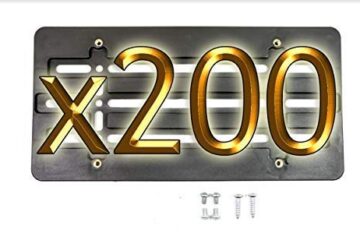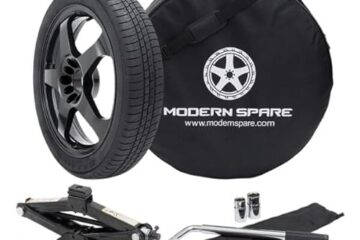Crossover Steering Vs High Steer: Which is Superior?
Crossover steering is a setup where the steering system is controlled by the drag link, while in high steer setup, the steering system is controlled by the steering arms. Crossover steering is popular in off-roading, while high steer is preferred for heavy-duty vehicles because of its durability and strength.
Off-road vehicles are designed to take on challenging terrain, making their steering system a vital component. Two popular choices are crossover steering and high steer. Crossover steering is when the drag link controls the steering system, providing adequate clearance and flexibility, ideal for off-road driving.
However, high steer is a more robust setup that is preferable for heavy-duty vehicles, as its steering arms control the system. In this article, we will explore the differences and advantages of both setups, and which option suits a particular vehicle.
Understanding Crossover Steering
Crossover steering and high steer are two common types of steering configurations used in off-road vehicles. Crossover steering connects the steering linkage and tie rod across the front of the axle, whereas high steer mounts the steering linkage and tie rod above the axle.
The advantage of crossover steering is that it reduces bump steer and allows for greater turning radius. However, it can limit ground clearance and increase the risk of damage to the steering components. There are two types of crossover steering: “low” and “high”.
Low crossover steering is best suited for vehicles with a lower ride height, whereas high crossover steering is ideal for taller vehicles. Overall, the choice between crossover steering and high steer comes down to personal preference and the intended use of the vehicle.
It is important to understand the advantages and disadvantages of each configuration to make an informed decision.
Understanding High Steer
High steer is a suspension system modification for off-road vehicles. It moves the steering linkage above the axle, improving ground clearance and reducing the risk of damage from rocks and other obstacles. Despite its benefits, it can be more expensive than traditional crossover steering and can also affect the vehicle’s stability at high speeds.
There are two types of high steer: full hydraulic and full mechanical. The former is more costly, but provides more precise steering. Full mechanical high steer is less expensive, but requires more maintenance. Ultimately, the choice between high steer and crossover steering depends on a variety of factors, including vehicle type, intended use, and budget.
Differences Between Crossover Steering And High Steer
Crossover steering and high steer are two different systems deployed in altering the steering geometry of a vehicle. In comparing them under the impact on suspension geometry, it becomes clear that crossover steering enables the steering system to compress the spring, making it more reliable and less bumpy.
However, high steer suspends the steering system to a particular extent, thus allowing the suspension’s articulation to move more. This makes the vehicle easier to control, especially when driving on uneven terrain. Ultimately, the choice between crossover steering and high steer comes down to individual preference, as well as the intended use of the vehicle.
Either system can work effectively, depending on the driver’s needs.
Which One Is Better: Crossover Steering Or High Steer?
Crossover steering and high steer are two common steering systems used in off-road driving. When deciding between the two, consider the weight and size of your vehicle, your driving style, and your budget. Crossover steering is great for larger vehicles with a lot of weight on the front axle, as it provides better handling and stability.
On the other hand, high steer works well for smaller off-road vehicles, as it adds clearance and flex to the off-road suspension. While each system has its advantages and disadvantages, the best choice depends on your specific needs and driving conditions.
To get a better understanding, researching real-world examples and case studies can be helpful. Ultimately, choosing the right steering system is important for safe and effective off-road driving.
Upgrading Your Steering System
Upgrading your steering system can significantly boost your vehicles handling and performance. Before you dive into this project, there are several things to consider. First, you need to choose the right steering parts and components. Secondly, installation and maintenance will be vital for the success of your upgrade.
When it comes to steering systems, two popular choices are crossover steering and high steer. Each has its pros and cons, so it’s essential to consider which one is best suited for your vehicle and driving style. Remember that the installation and maintenance of your steering system should not be taken lightly, as it’s a critical safety component of your car.
Make sure to follow all instructions and consult with an expert if necessary.
Frequently Asked Questions For Crossover Steering Vs High Steer
What Is Crossover Steering And How Does It Work?
Crossover steering is a steering system that uses a crossover bar to connect the steering linkage on opposite sides of the vehicle’s chassis. This setup allows for a tighter turning radius and improved off-road handling.
What Is High Steer And What Are Its Advantages?
High steer is a steering system that raises the steering linkage and steering arms, improving ground clearance and reducing the risk of damage to steering components. This setup offers better off-road performance and more precise handling.
Which Steering System Is Better: Crossover Steering Or High Steer?
The choice between crossover steering and high steer ultimately comes down to your specific needs and preferences. Crossover steering offers tighter turning radius and improved off-road handling, while high steer provides better ground clearance and more precise handling.
Conclusion
As we wrap up this comparison of crossover steering vs high steer, it’s clear that both options have their pros and cons. Crossover steering offers better handling in off-road situations and is generally easier to install. However, it can be less stable at high speeds and may not work for all types of vehicles.
On the other hand, high steer offers improved stability and is a more durable option, but it can be more challenging to install and may not be suitable for some vehicles. Ultimately, the choice between crossover steering and high steer will depend on your specific needs and preferences.
It’s important to carefully consider your vehicle type and intended use before making a decision. With the right steering system in place, you can navigate any terrain and enjoy a comfortable, safe driving experience.





0 Comments